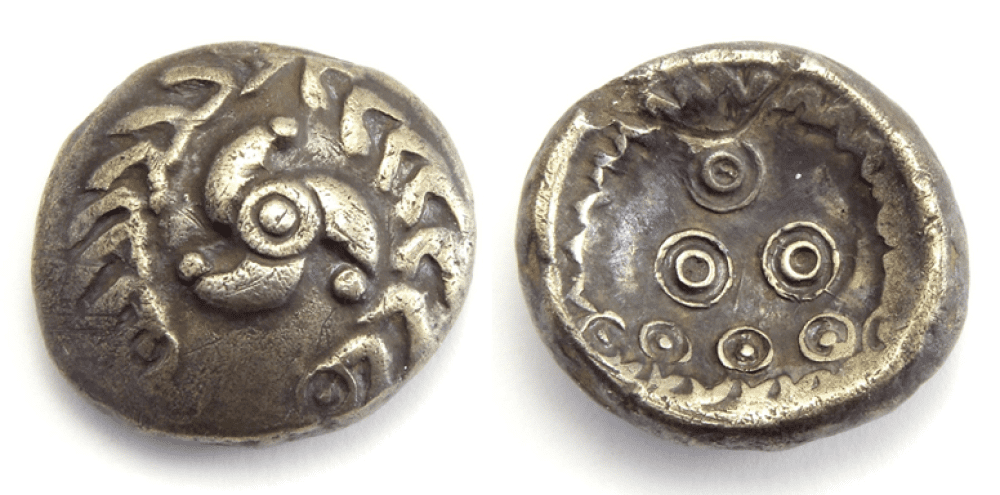In Irish folklore, it’s been told that leprechauns would hide treasure where rainbows met the Earth. While it’s of course fiction that fairies in the form of little old men are running about the Irish countryside burying pots of gold, the story of rainbow cups that were thought to come from those refractions in the sky has some truth to it.
Stashes of a type of Celtic coin with a domed shape that inspired its name “regenbogenschüsselchen,” which translates to “rainbow cup”, have driven a lot of excitement in recent years. In 2022, an ancient hoard was uncovered in Brandenburg, northeastern Germany, marking the first gold Celtic treasure ever found in the region. It was the second-largest hoard of rainbow cups ever found, but what were they?
Exactly who minted rainbow cups and what they were used for isn’t known for certain, as is often the case when it comes to details of the Celts. According to Coins Weekly, it’s more likely they served as gifts rather than currency, exchanged for currying favor or impressing a partner rather than acquiring goods and services.

Where rainbow cups got their reputation as being the treasure at the end of a rainbow probably ties into the weather conditions needed for a rainbow to appear. A rainbow needs water droplets in the air, either as rain or fog, and a low light source so that the sunlight passes through the water droplets.
When it does, refraction separates white light into different wavelengths giving rise to the seven colors we commonly associated with rainbows. There are technically more than seven colors as they aren’t neatly defined and as one blurs into another, you get midway colors like turquoise (curiously no black, brown, or grey, though).
The rain and sunlight that’s good for making rainbows is also great for finding coins, as it happens. Rainbow cups may be particularly easy to spot on a rainy, sunny day as their domed shapes mean they can hold a small amount of water that further reflects light.
Historically rainbow cups have been found in fields on rainy days, over time leading to the myth that they are the pot of gold to be found at the end of a rainbow. Rainbows actually don’t have an end that meets the ground, and from the right angle actually form full circles – we just see them as beginning and ending because of our perspective.
So, while you might not have much luck chasing rainbows, you might find your coin collecting goes better on rainbow days. As they say, correlation isn’t causation.
[H/T: Discover]
Source Link: Rainbow Cups: The Celtic "Pot Of Gold At The End Of A Rainbow"